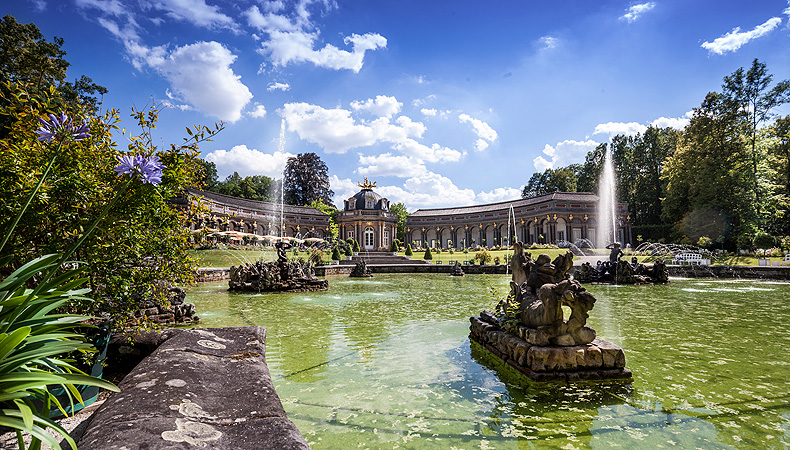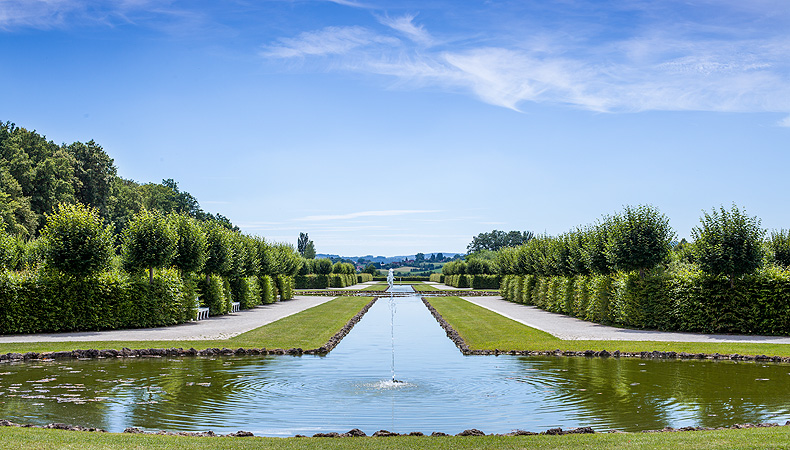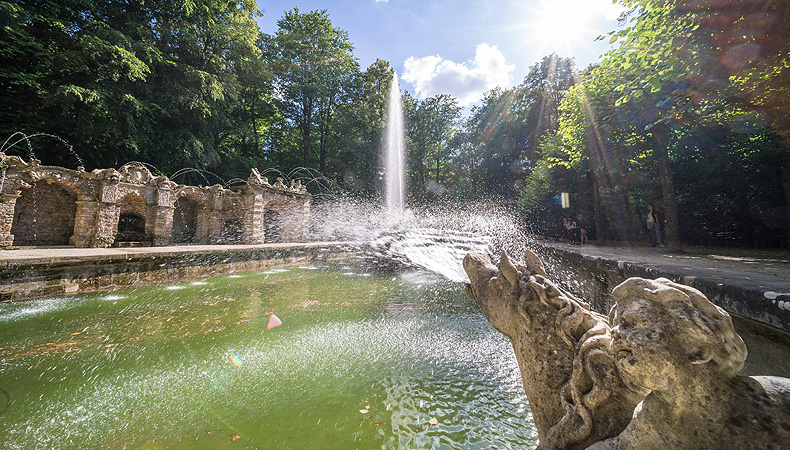Hermitage Court Garden – Bayreuth
Margrave Georg Wilhelm founded the Hermitage on the site of a zoo belonging to his father Christian Ernst. In 1715 the Old Palace was begun as the focal point of the hermitage. In the palace and the scattered hermit's huts in the woods the court played at being members of a hermits' order.
From 1735 Margravine Wilhelmine added further formal sections with boskets, avenues and water features to the gardens originally laid out by Margrave Georg Wilhelm. Although traditional baroque elements were used, the result was not a typical baroque garden: the complex is not dominated by a main axis and the individual garden sections are more independent from one another than was usual in the high baroque era.
The New Palace with the upper grotto, the lower grotto, the Margrave's Hermitage, the "Ruined Theatre" and other small buildings from Wilhelmine's day are still the dominant features of the Hermitage. At the end of the 18th century, the Hermitage Court Garden was transformed into a landscape garden, which included replacing the boskets with natural stands of trees and meadows. Over the last 30 years, individual sections of the park which disappeared in the 19th century have been reconstructed.
Address
Eremitage 4
95448 Bayreuth
 0921 75969-37
0921 75969-37
www.bayreuth-wilhelmine.de
Opening hours
Park open all year round
Admission charge
Admission free
Accessibility
Waterworks
May to mid-October every hour:
Bassin at the New Palace:
daily 10 am-5 pm
Lower Grotto:
daily 10.15 am-5.15 pm
Getting here / parking
Bayreuth
www.bahn.com
Bus to ‘Eremitage’ or to ‘Ochsenhut’
Car and bus parking spaces at the entrance to the park
Further information
Event rooms at Hermitage Court Garden
Service (leaflets, photo/film, links…)
Shop at Hermitage Old Palace
www.kulturgut.de
Orangerie Schlosscafé & Events Eremitage
0152 34150900
info@orangerie-eremitage.de
Montag Ruhetag/
closed on Mondays
Administrative office
Schloss- und Gartenverwaltung
Bayreuth-Eremitage
Ludwigstraße 21
95444 Bayreuth
0921 75969-0
Fax 0921 75969-15
sgvbayreuth@ bsv.bayern.de
www.bayreuth-wilhelmine.de




Facebook Instagram YouTube